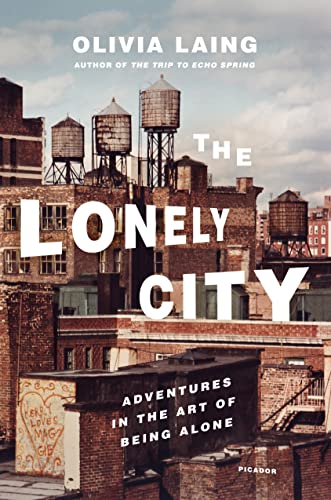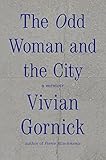
In a recent feature in Afar magazine, Chris Colin describes three friends he made while traveling in Tokyo. They accompanied him to restaurants around the city, talked with him about relationships and parents, and were paid by the hour to hang out with him.
Colin was reporting on the service Client Partners, which provides simple, platonic friendship to its customers. At first he chalks this up to a phenomenon he calls “Japanese wackiness,” in line with cat cafes and host clubs. But in a country with an overworked, rapidly shrinking population and high suicide rates — a country still recovering from the twin blows of the Tohoku earthquake and Fukushima nuclear disaster — Client Partners seeks to address a societal crisis rather than fill a niche demand. The deluge of photos on social media and gaggles of people hanging out in subway stations are all a mask, the professional friends tell Colin. There is a deep loneliness there, an unmet need for human intimacy.
In The Lonely City, set 6,700 miles from the young skyscrapers of Tokyo in the older, grimier blocks of New York City, Olivia Laing conducts her own investigation into the way loneliness is expressed in the metropolis, using art as her point of departure: Andy Warhol’s endless audio tapes, the epic bloody watercolors hoarded by Chicago janitor Henry Darger, the terrifyingly public Internet-cum-social-experiments of Josh Harris. “Loneliness,” she writes is “a populated place: a city in itself.” Laing draws on the “fertile as well as frightening” sensation of loneliness — a state of being experienced from Tokyo to New York, felt by a quarter of American adults and a greater percentage of British ones — to tackle not only why and how loneliness is experienced, but the fruit it brings forth. How does art resist the isolating effects of solitude?
The success of Laing’s book is that it doesn’t require the reader to know much about — or even to be particularly interested in — the New York art world. It’s more about the people that populate it and the stories that make them who they are. The Lonely City draws on social science, gay culture, AIDS history, and the influence of technology, weaving in snippets of memoir. Laing’s prose is elegant and concise, with a breath of Joan Didion: a painting is described as a “cool green icebox,” loneliness as a “city, perhaps at dusk, when everyone turns homeward and the neon flickers into life.”
The book moves seamlessly between Blade Runner and Ludwig Wittgenstein, from art to attachment theory, from Henry Darger to behavioral psychology and Harry Harlow’s experiments with “monster mothers.” In its interdisciplinary scope and mix of culture, theory, and memoir, The Lonely City brings to mind other nonfiction hits of recent years, books like Maggie Nelson’s The Argonauts or Leslie Jamison’s The Empathy Exams. These books are written by complex, fiercely intelligent women with deep capacities for rigorous research, analysis, and synthesis. The topics they tackle are tough and human: queer identity and modern families in The Argonauts; the various trespasses and violences of empathy (as well as its tenderness and necessity) in The Empathy Exams. Laing has likewise done the legwork; her evocations of the various artists that make up her book are penetrating and full of reversals.
There’s Andy Warhol, of whom Laing writes, “[He was] famous for his relentless sociability…almost never without a glittering entourage and yet his work is surprisingly eloquent on isolation and the problems of attachment.” She paints a particularly loving and detailed portrait of David Wojnarowicz, whose first memory is of horseshoe crabs and who liked to hang by his fingers from the window ledge of his bedroom. (Laing refers to him by his first name; the intimacy is startling.) The connections and conclusions she draws are coherent, nuanced, and sometimes surprising. See, for instance, how she juggles the delicate politics of communication and the double-edged blade of confession and intimacy:
It’s about wanting and not wanting: about needing people to pour themselves out into you and then needing them to stop, to restore the boundaries of the self, to maintain separation and control. It’s about having a personality that both longs for and fears being subsumed into another ego.
The Lonely City is smart and crisp without being jargony, and the wide cast of characters and complex ideas are laid out in easy-to-absorb ways. Laing’s research and insight into the queer art community in New York, both before and during the AIDS crisis, is particularly rich ground. Through Laing’s book we can see the systemic causes of loneliness — an individual experience, but one that comes from an interplay of a broad variety of societal factors of exclusion and inequality. As she tells us, “Loneliness is personal, and it is also political.” This is important, and where The Lonely City is at its best. Laing carefully shows us how social deprivation as a result of poor environment or systemic prejudice can result in a lifelong struggle with socialization and belonging that colors an individual for life.
 But this is not just a book of cultural criticism and social research. Like The Argonauts and The Empathy Exams, or Vivian Gornick’s The Odd Woman and the City, Laing also incorporates memoir. Curiously, this is where the book feels most flat. We get snippets of her time in New York, subletting various friends’ apartments and moving around different neighborhoods. We hear about a Halloween party and a little bit about a failed relationship, about where Laing likes to walk for her morning coffee and the hours she spends on Twitter. We know Laing is lonely, because she says that she is. But though her analysis of the lives and motivations of the artists is deep and compelling, she very rarely turns that same analytical lens to herself, and in the rare moments she does, doesn’t push through to any type of conclusion.
But this is not just a book of cultural criticism and social research. Like The Argonauts and The Empathy Exams, or Vivian Gornick’s The Odd Woman and the City, Laing also incorporates memoir. Curiously, this is where the book feels most flat. We get snippets of her time in New York, subletting various friends’ apartments and moving around different neighborhoods. We hear about a Halloween party and a little bit about a failed relationship, about where Laing likes to walk for her morning coffee and the hours she spends on Twitter. We know Laing is lonely, because she says that she is. But though her analysis of the lives and motivations of the artists is deep and compelling, she very rarely turns that same analytical lens to herself, and in the rare moments she does, doesn’t push through to any type of conclusion.
In one of the lengthier personal passages, but also one of the most confusing parts of the book, Laing describes a struggle with gender identity:
I was not at all comfortable in the gender box to which I’d been assigned…I’d never been comfortable with the demands of femininity, had always felt more like a boy, a gay boy, that I inhabited a gender position somewhere between the binaries of male and female, some impossible other, some impossible both.
What do we do with this information? It’s striking; we feel it must have some significance to Laing’s project. But as part of Laing’s narrative it mysteriously drops out and isn’t returned to.
This invites the question that arises again and again in popular discourse around writing: what do we want from our nonfiction writers? Confession? Resolution? In her essay “Grand Unified Theory of Female Pain”, Leslie Jamison uses her own history of heartbreak and self-harm to talk about the icon of the “damaged” female and the shadow she casts on the modern-day women who are afraid of being her. “I am not a melodramatic person.” It’s personal. It digs deep. Jamison is not afraid to share a lot. Even if she were, today’s readers have such an appetite for these explosive, confessional personal essays that it’s too late to be afraid.
Laing, by contrast, is reticent. She doesn’t share much of herself. Unlike Nelson or Jamison, Laing doesn’t seem committed enough to the memoir strain of her cross-genre book. We wonder, then, why she traverses the personal at all. In some ways this highlights one of her opening precepts: “Loneliness is difficult to confess; difficult too to categorize.” A running theme in her book is the difficulty of tackling loneliness head-on, in writing or in speech — and why, perhaps, so many artists approached it in elliptical ways.
We are aware of Laing’s loneliness as she researches and engages with the artists in the book, so we also see her dogged (but perhaps not always completely truthful) optimism about the ameliorative effects of art for combating loneliness. Was Henry Darger’s disturbing art really about “the reparative impulse” of collaging together the self’s fractured, lonely parts? In all her description of the generative side to loneliness — the stuff that comes from loneliness, Laing never quite answers the question: Were these artists’ lives made happier because of their art?
Reading a book about loneliness when you are lonely is tricky; the reader looks for a solution to the problem. Writing a book about loneliness when you are lonely must be even more difficult. At the end of The Lonely City, Laing does not offer up novel “answers,” either to her own loneliness or the reader’s; it’s not clear, even, whether the book feels loneliness is a problem to be solved. (Indeed, the best conclusion from Laing’s personal experience comes after the book ends, in the acknowledgements: “writing a book about loneliness…has been astonishingly connecting.”) Her closing prescriptions — to be kind, to stay open — are the stuff of motivational blogs. It’s hard to fault her for this; it’s not, after all, a self-help book. As anyone who has been lonely knows, it can’t necessarily be cured — either by friends who are paid by the hour, or by a book.




